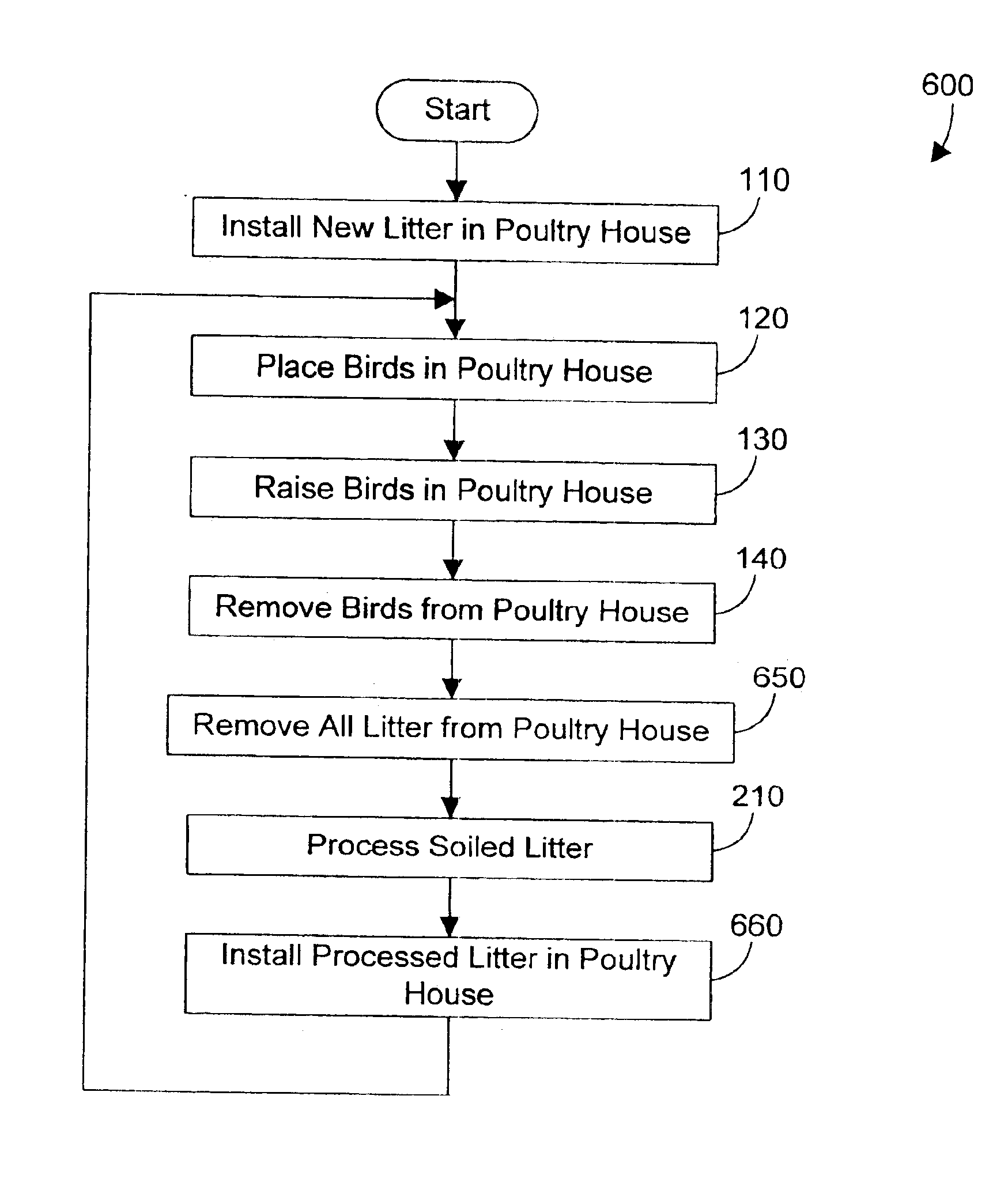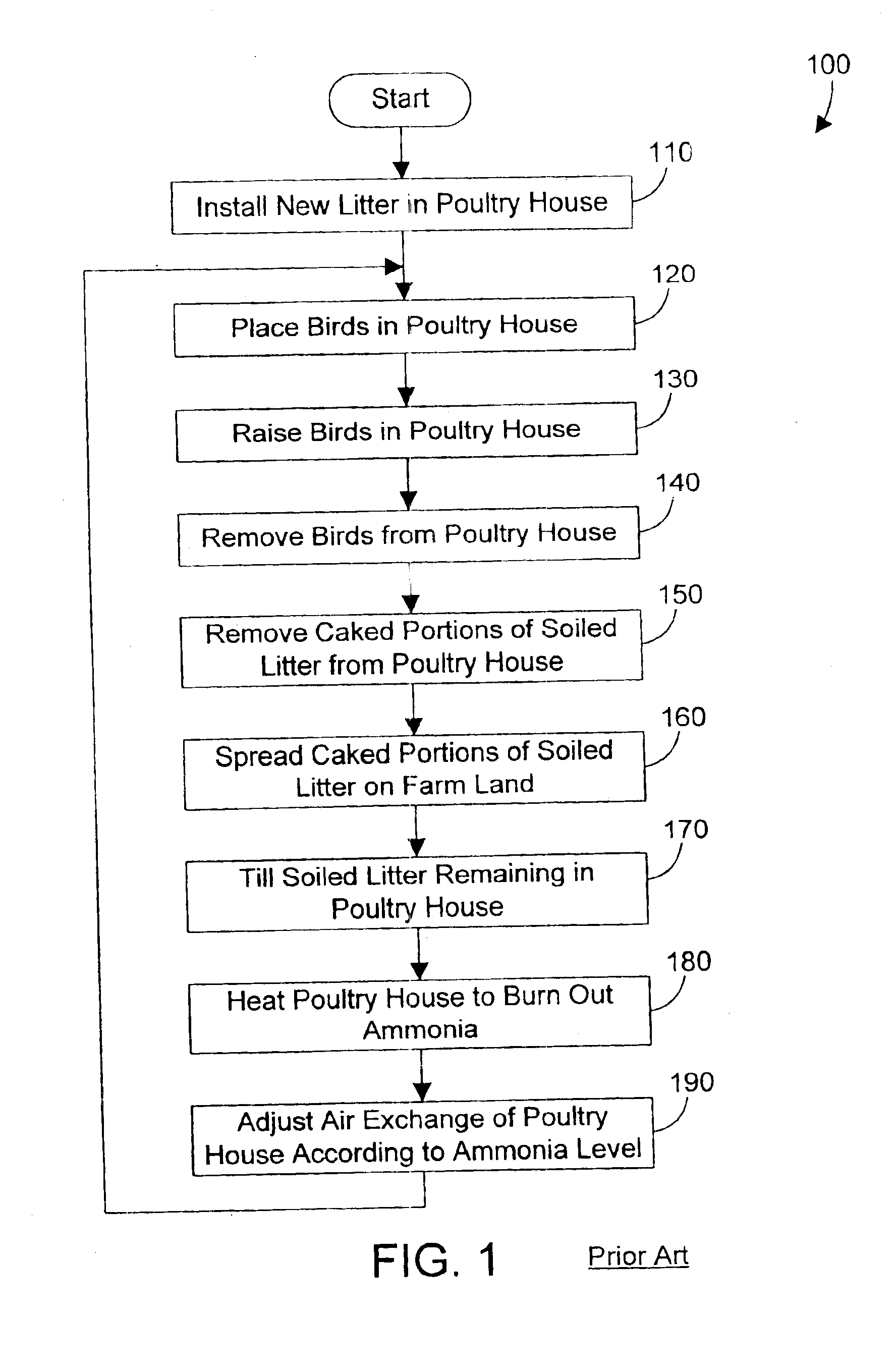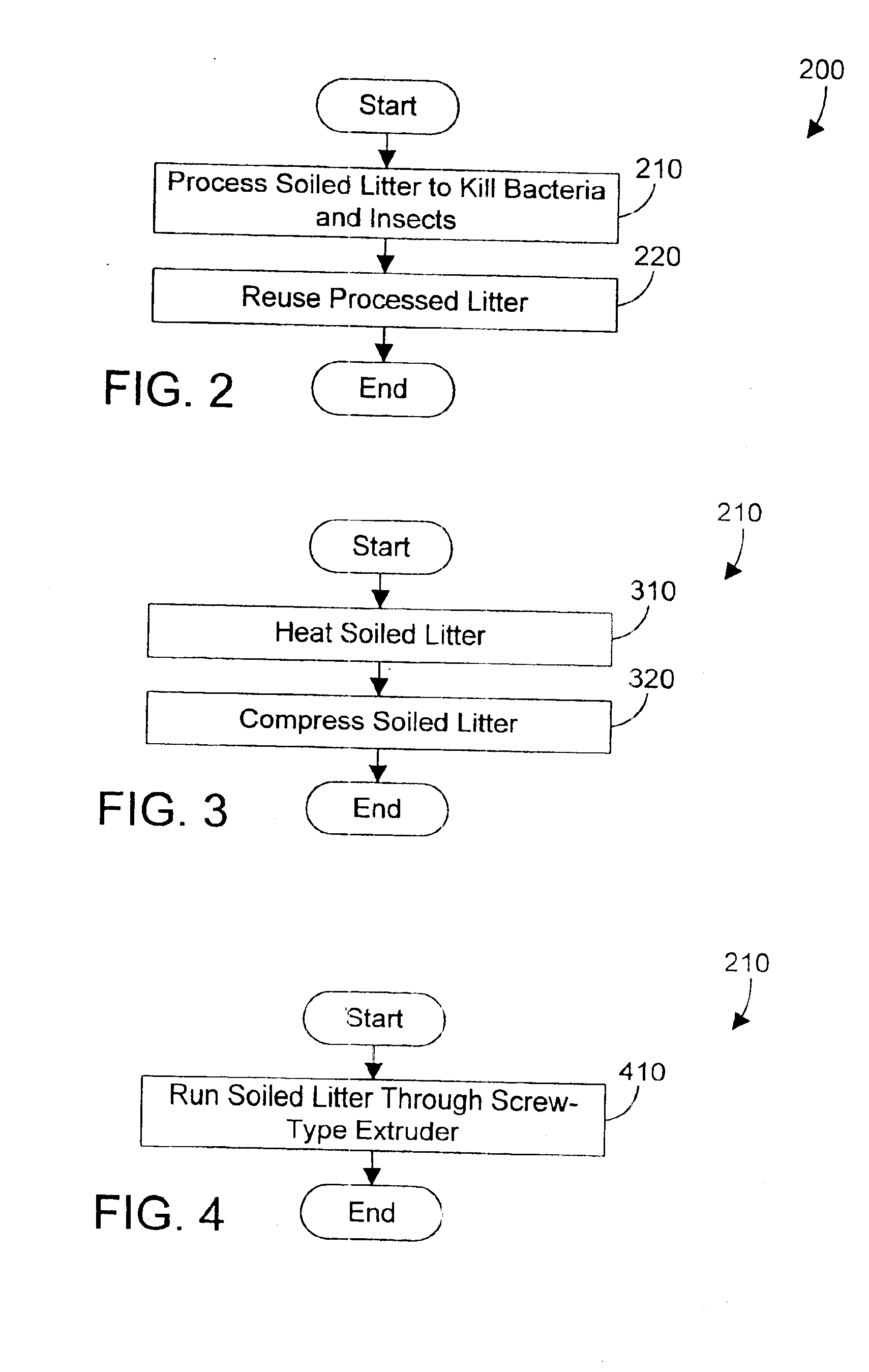Method for processing and recycling animal waste and method for doing business using the same
- Summary
- Abstract
- Description
- Claims
- Application Information
AI Technical Summary
Benefits of technology
Problems solved by technology
Method used
Image
Examples
Embodiment Construction
The preferred embodiments disclose methods for processing animal waste, and methods for doing business that include the processing of animal waste or the use of recycled animal waste that has been processed. The specific examples provided herein relate to poultry farming, but one skilled in the art will recognize that the methods herein are not limited to poultry applications.
Referring now to FIG. 1, a prior art method 100 for raising birds in poultry houses begins by installing new litter in a poultry house (step 110). The term “litter” is used herein in its broadest possible sense, and expressly includes organic materials such as sawdust, wood chips, and rice hulls, inorganic materials such as sand, processed materials such as shredded newspaper, and any other material that causes animal excrement to form clumps, whether naturally-occurring, processed, or synthetic. We assume that step 110 is performed after a poultry house is constructed, or after an annual clean-out of the poult...
PUM
 Login to View More
Login to View More Abstract
Description
Claims
Application Information
 Login to View More
Login to View More - R&D
- Intellectual Property
- Life Sciences
- Materials
- Tech Scout
- Unparalleled Data Quality
- Higher Quality Content
- 60% Fewer Hallucinations
Browse by: Latest US Patents, China's latest patents, Technical Efficacy Thesaurus, Application Domain, Technology Topic, Popular Technical Reports.
© 2025 PatSnap. All rights reserved.Legal|Privacy policy|Modern Slavery Act Transparency Statement|Sitemap|About US| Contact US: help@patsnap.com



